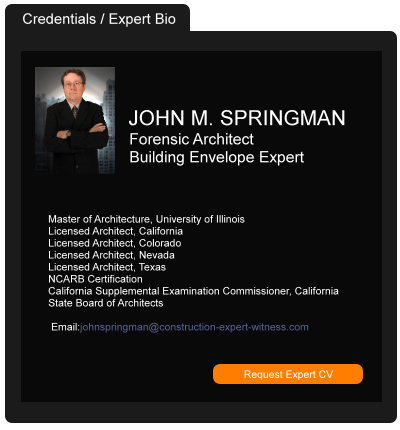Where-Forum Art Thou? Is the Chosen Forum Akin to No Forum at All?
May 30, 2022 —
William Doerler - The Subrogation StrategistMany courts enforce forum selection clauses in contracts between parties. In W. Bay Plaza Condo. Ass’n v. Sika Corp., No. 3D21-1834, 2022 Fla. App. LEXIS 1637 (W. Bay Plaza), the Court of Appeal of Florida, Third District (Court of Appeal) answered the question of whether a mandatory forum selection clause in a manufacturer’s warranty was enforceable as to a condominium association, who was a non-signatory. The trial court enforced the forum selection clause – calling for litigation in New Jersey rather than Florida – and the Court of Appeal affirmed the ruling.
As stated in W. Bay Plaza, in late 2013 and early 2014, West Bay Plaza Condominium Association (W.B. Plaza Condo. Ass’n) contracted with Built Right Installers International Corporation, R.J. Miranda Consultants, Inc. and UCI Engineering Inc. (collectively, the Construction Defendants) to have repairs done to the exterior of the property. In 2016, Sika Corporation (Sika), a New Jersey corporation, gave a five-year warranty to W.B. Plaza Condo. Ass’n for three sealant products used to repair the garage at the property. In 2019, W.B. Plaza Condo. Ass’n sued the Construction Defendants for breach of contract and professional negligence. Subsequently, W.B. Plaza Condo. Ass’n amended its complaint and filed a claim against Sika, alleging that Sika breached its warranty because its products failed to provide a watertight barrier. Sika filed a motion to dismiss the action, alleging that Florida was an improper venue because its’ warranty contained a mandatory forum selection clause. W.B. Plaza Condo. Ass’n argued that it was not bound by the forum selection clause because it was a non-signatory to the warranty and, even if it was bound by the clause, there were compelling reasons not to enforce it.
Read the court decisionRead the full story...Reprinted courtesy of
William Doerler, White and Williams LLPMr. Doerler may be contacted at
doerlerw@whiteandwilliams.com
Massive Danish Hospital Project Avoids Fire Protection Failures with Imerso Construction AI
December 23, 2023 —
Aarni Heiskanen - AEC BusinessEnsuring regulatory compliance of firewall constructions is getting a high-tech boost. Over the past 16 months, the construction team responsible for the iconic new Nyt Hospital Nordsjælland near Copenhagen used Imerso construction AI technology to achieve remarkable results. By using Imerso, the team enhanced work productivity while preventing costs and delays worth €5.2 million during the construction of the superstructure.
Inspired by this success, the team led by Project Manager Anders Kaas has since been eager to explore the potential of the technology in other areas. The opportunity arose to address a topic that has traditionally posed significant challenges and expenses in numerous construction projects – ensuring regulatory compliance of fire barriers and firewall constructions.
Read the court decisionRead the full story...Reprinted courtesy of
Aarni Heiskanen, AEC BusinessMr. Heiskanen may be contacted at
aec-business@aepartners.fi
Insurance Client Alert: Denial of Summary Judgment Does Not Automatically Establish Duty to Defend
January 28, 2015 —
Valerie A. Moore and Christopher Kendrick – Haight Brown & Bonesteel LLPIn McMillin Companies v. American Safety Indemnity (No. D063586, filed 1/20/15), a California appeals court ruled that an insurer's loss of a summary judgment motion on the duty to defend does not necessarily establish that a duty to defend existed.
McMillin was the general contractor for a series of residential construction projects, sued in a construction defect action brought by 117 homeowners. McMillin tendered its defense to its subcontractors' insurers, including American Safety (ASIC), claiming status as an additional insured (AI). ASIC denied the tender.
McMillin sued ASIC and other insurers alleging breach of contract and bad faith for the failure to defend McMillin as an additional insured. Eventually, all of the other insurers settled, leaving ASIC as the sole defendant. ASIC moved for summary judgment, but the trial court denied the motion, ruling that ASIC had failed to carry its burden of disproving coverage under a blanket additional insured endorsement in the policy.
Reprinted courtesy of
Valerie A. Moore, Haight Brown & Bonesteel LLP and
Christopher Kendrick, Haight Brown & Bonesteel LLP
Ms. Moore may be contacted at vmoore@hbblaw.com, Mr. Kendrick may be contacted at ckendrick@hbblaw.com
Read the court decisionRead the full story...Reprinted courtesy of
Tennessee Court of Appeals Holds Defendant Has the Burden of Offering Alternative Measure of Damages to Prove that Plaintiff’s Measure of Damages is Unreasonable
July 18, 2018 —
Gus Sara - The Subrogation StrategistIn Durkin v. MTown Construction, LLC, 2018 Tenn. App. LEXIS 128, the Court of Appeals of Tennessee considered whether the lower court properly took judicial notice of an alternative measure of damages to the measure of damages advanced by the plaintiff. The Court of Appeals held that the defendant has the burden of offering evidence of alternative measures of damages if it seeks to argue that the plaintiff’s measure of the damages is unreasonable. The Court of Appeals found that the lower court erred in taking judicial notice of alternative measures of damage when the defendant failed to meet its burden of proof. The court’s holding establishes that, if the defendant does not offer evidence of alternative measures of damage, then the measure of damages introduced by the plaintiff will apply.
Read the court decisionRead the full story...Reprinted courtesy of
Gus Sara, White and Williams LLPMr. Sara may be contacted at
sarag@whiteandwilliams.com
Narrow Promissory Estoppel Exception to Create Insurance Coverage
August 07, 2022 —
David Adelstein - Florida Construction Legal UpdatesThere is an affirmative claim known as promissory estoppel. (Whereas equitable estoppel is used an affirmative defense, promissory estoppel is used as an affirmative claim.)
To prove promissory estoppel, a plaintiff must plead and prove the following three elements: “(1) a representation as to a material fact that is contrary to a later-asserted position; (2) a reasonable reliance on that representation; and (3) a change in position detrimental to the party claiming estoppel caused by the representation and reliance thereon.” Romo v. Amedex Ins. Co., 930 So.2d 643, 650 (Fla. 3d DCA 2006) (citation and quotation omitted). Stated differently: “A party will be estopped from denying liability under the principle of promissory estoppel when the party makes ‘[a] promise which the promisor should reasonably expect to induce action or forbearance of a definite and substantial character on the part of the promisee and which does induce such action or forbearance…[and] injustice can be avoided only by enforcement of the promise.’” Criterion Leasing Group v. Gulf Coast Plastering & Drywall, 582 So.2d 799, 800 (Fla. 1st DCA 1991).
Read the court decisionRead the full story...Reprinted courtesy of
David Adelstein, Kirwin Norris, P.A.Mr. Adelstein may be contacted at
dma@kirwinnorris.com
Harmon Towers Duty to Defend Question Must Wait, Says Court
March 01, 2012 —
CDJ STAFFThe Harmon Towers project in Las Vegas was eventually halted short of the planned forty-seven stories after “it was determined that there was substantial defective construction, including defective installation of reinforcing steel throughout the Harmon.” The American Home Insurance Company and Lexington Insurance Company put forth a claim that they had no duty to defend Perini Construction, the builder of the defective Harmon Towers. Further, American Home seeks to recover the monies American reimbursed Perini. The United States District Court of Nevada ruled in the case of American Home Assurance Co. v. Perini Building on February 3, 2012.
�The two insurance companies covered Perini and its subcontractors, Century Steel, Pacific Coast Steel, and Ceco Concrete Construction. Century Steel was the initial subcontractor for the reinforcing steel; they were later acquired by Pacific Coast Steel. In this current case, Perini Construction is the sole defendant.
�Perini sought a dismissal of these claims, arguing that without the subcontractors joined to the case, “the Court cannot afford complete relief among existing parties.” The court rejected this claim, noting that the court can determine the duties of the insurance companies to Perini, which the court described as “separate and distinct from those of the subcontractors.” The subcontractors “have not claimed an interest in the subject matter of the action.” The court concluded that it could determine whether Perini was entitled or not to coverage without affecting the subcontractors. The court rejected Perini’s claim.
�Perini also asked the court to abstain from the case, arguing that it was better heard in a state court. The court noted that several considerations cover whether a case is heard in state or federal courts. The court noted that if the case weighed heavily on state law, the state courts would be the obvious location. Further, if there were a parallel action in the state courts, “there is a presumption that the whole suit should be heard in state courts.” This is, however, no parallel state suit, although the court noted that Perini has “threatened” to do so.
�However, the issue of who is to blame for the problems at Harmon Towers has not been resolved. The court concluded that until the “underlying action” was concluded, it was premature to consider the issues raised in this case while the earlier lawsuit was still in progress. The court denied Perini’s motion to dismiss the case. Given that the outcome of the earlier construction defect case may lead to further litigation in state court, the District Court granted Perini’s motion to abstain, but staying their judgment until the construction defect case is resolved.
Read the court’s decision…
Read the court decisionRead the full story...Reprinted courtesy of
After Restoring Power in North Carolina, Contractor Faces Many Claims
August 10, 2017 —
Jim Parsons - Engineering News-RecordHaving successfully helped to restore power to two North Carolina barrier islands, PCL Civil Constructors now faces the fallout from a July 27 construction incident that forced a week-long evacuation of 60,000 visitors, putting a potential multimillion-dollar dent in the region’s tourism-dependent economy.
Read the court decisionRead the full story...Reprinted courtesy of
Jim Parsons, ENRENR may be contacted at
ENR.com@bnpmedia.com
Is an Initial Decision Maker, Project Neutral, or Dispute Resolution Board Right for You?
July 14, 2016 —
David Adelstein – Florida Construction Legal UpdatesRecently, I participated in a roundtable hosted by JAMS with experienced South Florida construction lawyers and retired circuit court judges to discuss the pros and cons of utilizing an initial decision maker (“IDM” and also referred to as a project neutral) or a dispute resolution board (“DRB”) to resolve disputes on construction projects. The IDM and DRB are designed to resolve disputes, specifically claims (whether for time, money, or both), during construction to keep the project progressing forward without being bogged down by the inevitable claim. There are numerous avenues to resolve disputes without resorting to filing a lawsuit or a demand for arbitration. The thought is that dispute resolution will be facilitated by techniques designed to assist the parties with the resolution of claims during construction. While direct discussions between the parties, meetings with the executives for business decision purposes, mediations, etc., are certainly helpful, sometimes these avenues are simply not enough to truly resolve a complex claim on a construction project that occurs during construction.
Read the court decisionRead the full story...Reprinted courtesy of
David M. Adelstein, Kirwin NorrisMr. Adelstein may be contacted at
dma@kirwinnorris.com


































































